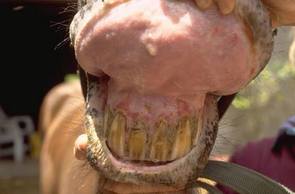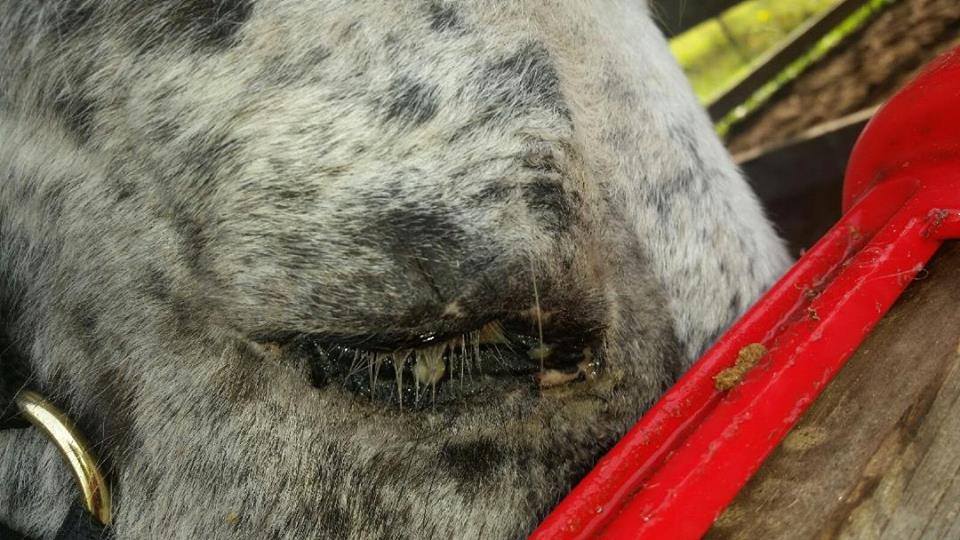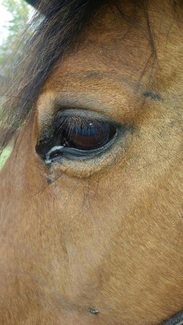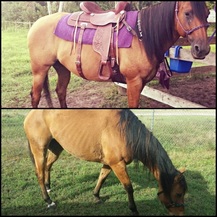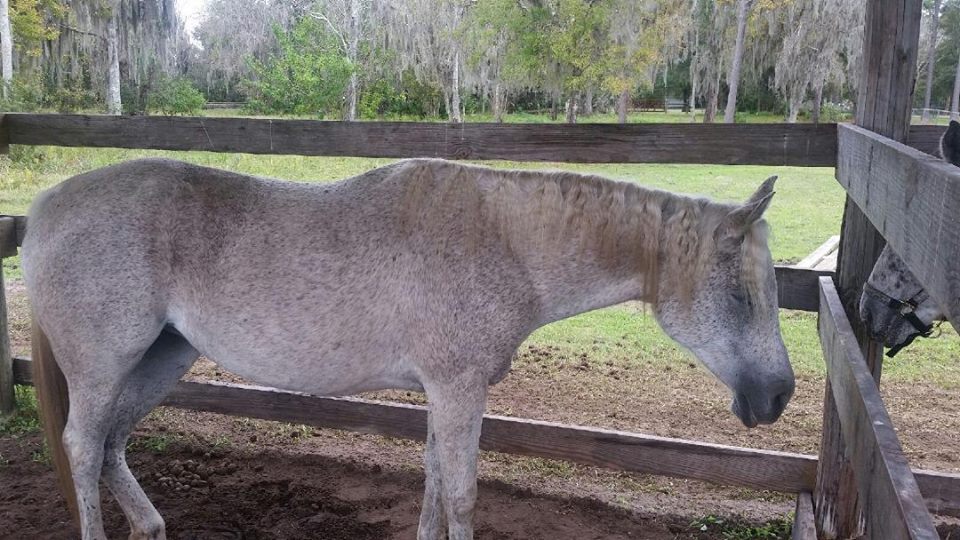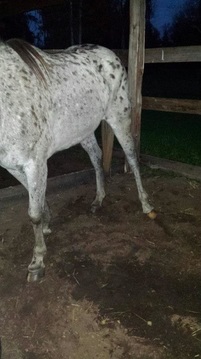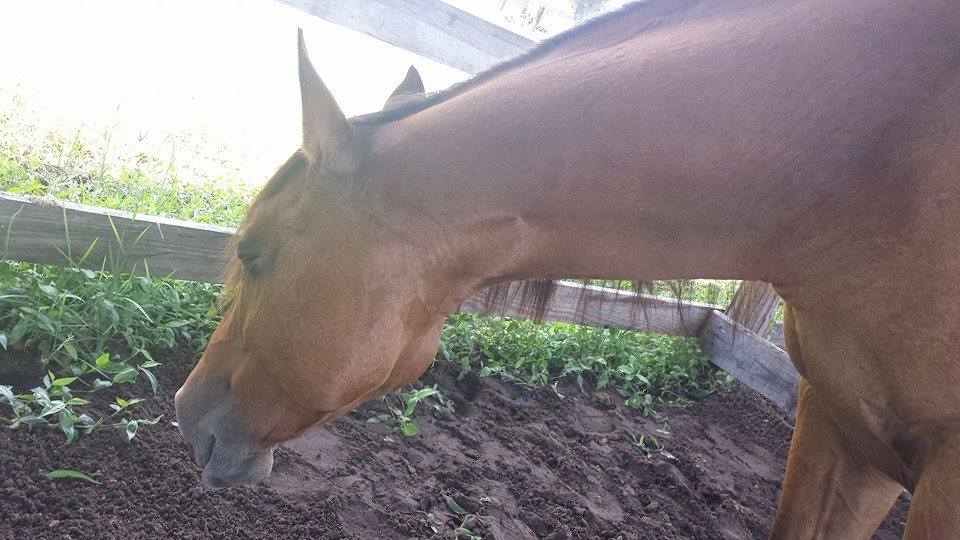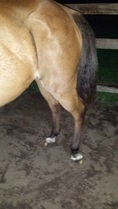Symptoms :
Creeping Indigo contains two toxins:
3-nitropropionate (3-NPA) - A highly toxic compound, produced by the plant primarily as defense against destruction by herbivores. The toxin is a potent and irreversible inhibitor of mitochondrial succinate dehydrogenase, a key enzyme in transforming glucose and oxygen into useable energy. Nerve cells are extremely vulnerable to energy deprivation, thus accounting for the early and prominent neurologic signs seen with all types of 3-NPA toxicity. Because it is metabolized quickly, it is unlikely to be found in the serum of affected animals.
Indospicine - A non-protein amino acid. It is toxic to the liver because of antagonism to the essential amino acid arginine, with which it competes. It is a CUMULATIVE toxin meaning: it builds in their system over a LIFETIME and persists, even after, removal from the weed. One of its principal toxic actions is inhibition of nitric oxide synthase, an action likely associated with the development of corneal edema and ulceration of mucous membranes. Although horses are relatively resistant to the liver damaging effects of this toxin, it persists in the tissues of horses dying or killed with the disease and these tissues are potentially toxic. Indospicine CAN BE detected in the serum of affected animals however, that test is not currently included in U.S. toxicology panels.
How much has to be consumed in order to cause illness has not yet been studied and or published.
3-nitropropionate (3-NPA) - A highly toxic compound, produced by the plant primarily as defense against destruction by herbivores. The toxin is a potent and irreversible inhibitor of mitochondrial succinate dehydrogenase, a key enzyme in transforming glucose and oxygen into useable energy. Nerve cells are extremely vulnerable to energy deprivation, thus accounting for the early and prominent neurologic signs seen with all types of 3-NPA toxicity. Because it is metabolized quickly, it is unlikely to be found in the serum of affected animals.
Indospicine - A non-protein amino acid. It is toxic to the liver because of antagonism to the essential amino acid arginine, with which it competes. It is a CUMULATIVE toxin meaning: it builds in their system over a LIFETIME and persists, even after, removal from the weed. One of its principal toxic actions is inhibition of nitric oxide synthase, an action likely associated with the development of corneal edema and ulceration of mucous membranes. Although horses are relatively resistant to the liver damaging effects of this toxin, it persists in the tissues of horses dying or killed with the disease and these tissues are potentially toxic. Indospicine CAN BE detected in the serum of affected animals however, that test is not currently included in U.S. toxicology panels.
How much has to be consumed in order to cause illness has not yet been studied and or published.
non - neurological :
Non-neurological signs: weight loss (largely attributed to muscle waste), pale gums, dropping or retaining feed in the cheeks, halitosis, irritated, watery eyes that are sensitive to light which often causes squinting, eye discharge, cloudy corneas, corneal ulceration/striations, ulceration of the tongue and gums, inappetance due to stomach/oral ulcers, dehydration, laminitis and sometimes a high heart and respiratory rates, labored breathing or high temperature can be present.
neurological symptoms :
Often an early sign is a change in personality – ranging from mild lethargy to depression. Low head carriage and episodes of standing sleep-like activity (narcolepsy) and head-pressing. Sometimes horses can be seen carrying their head tilted to one side and their necks and bodies twisted in the same direction which is indicative of impairment of the balance centers of the brain. You may also see rhythmic blinking and jerking eye movements though, the blink response to hand gestures toward the eyes is frequently absent. The muzzle and lips often hang flaccidly. An abnormal gait or in-coordination and weakness in the limbs, including leg crossing in a “crab-like” gait, interference between hooves, buckling of joints during weight-bearing and abnormal posturing at rest (the kickstand or dead leg pictured below). Some affected horses develop a bizarre high-stepping gait in their front legs. In later stages horses develop convulsions which become severe before death or euthanasia after days in recumbency. In pregnant mares- miscarriages have also been linked to this weed.
